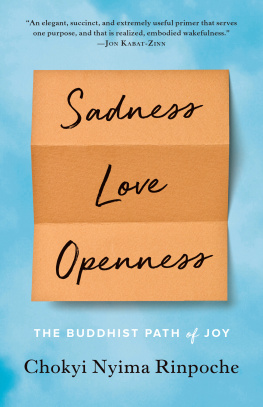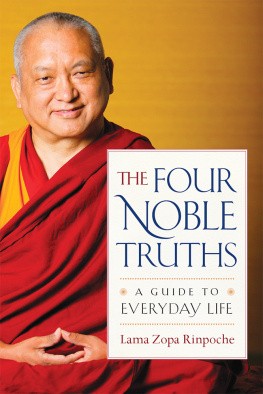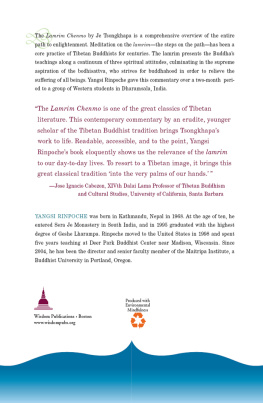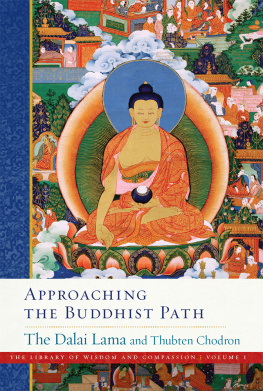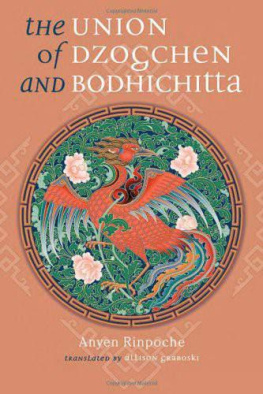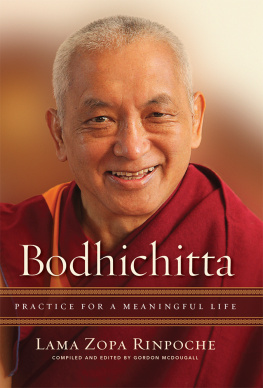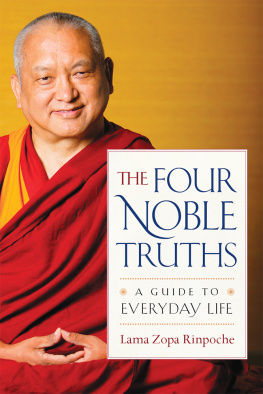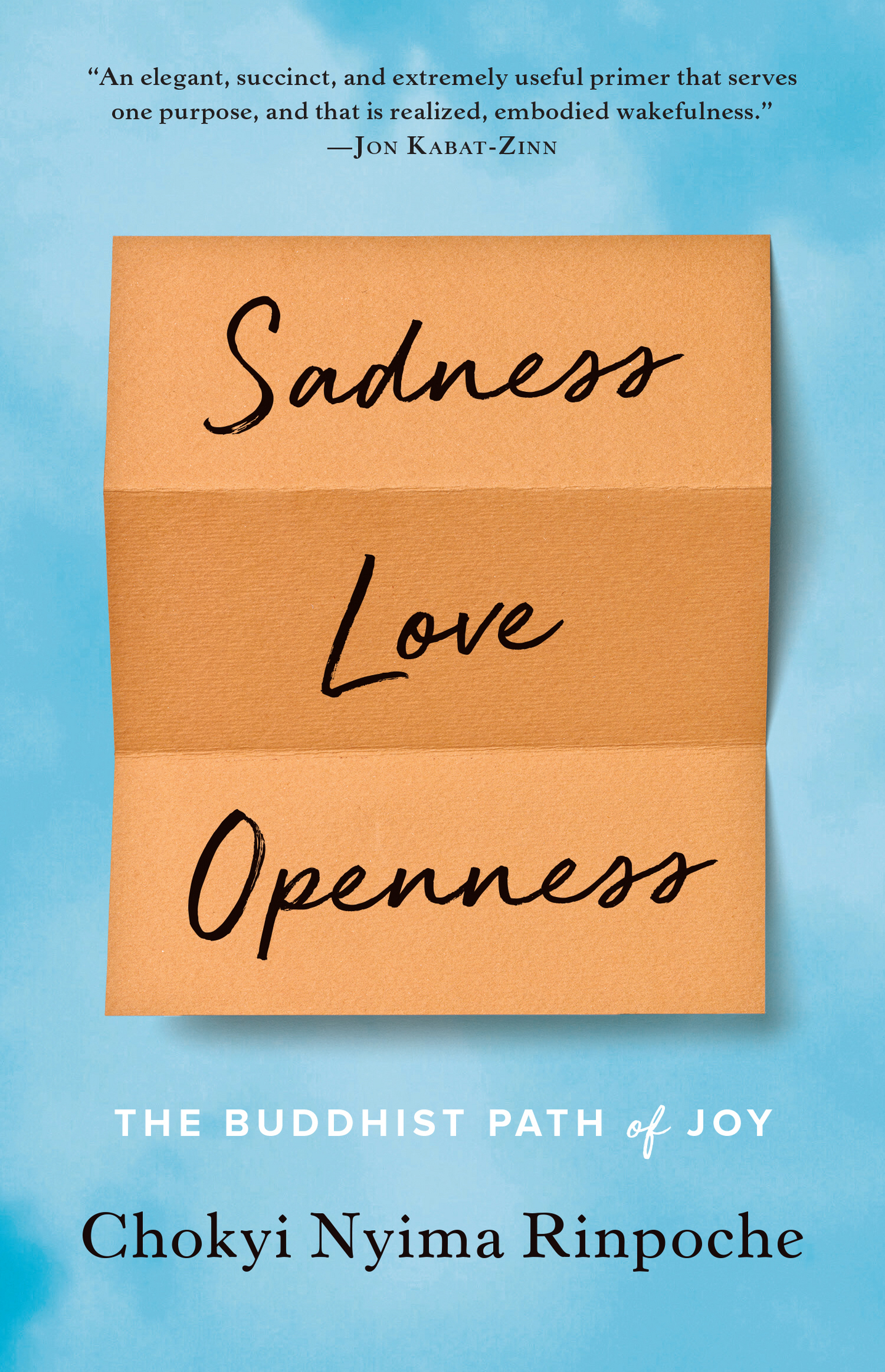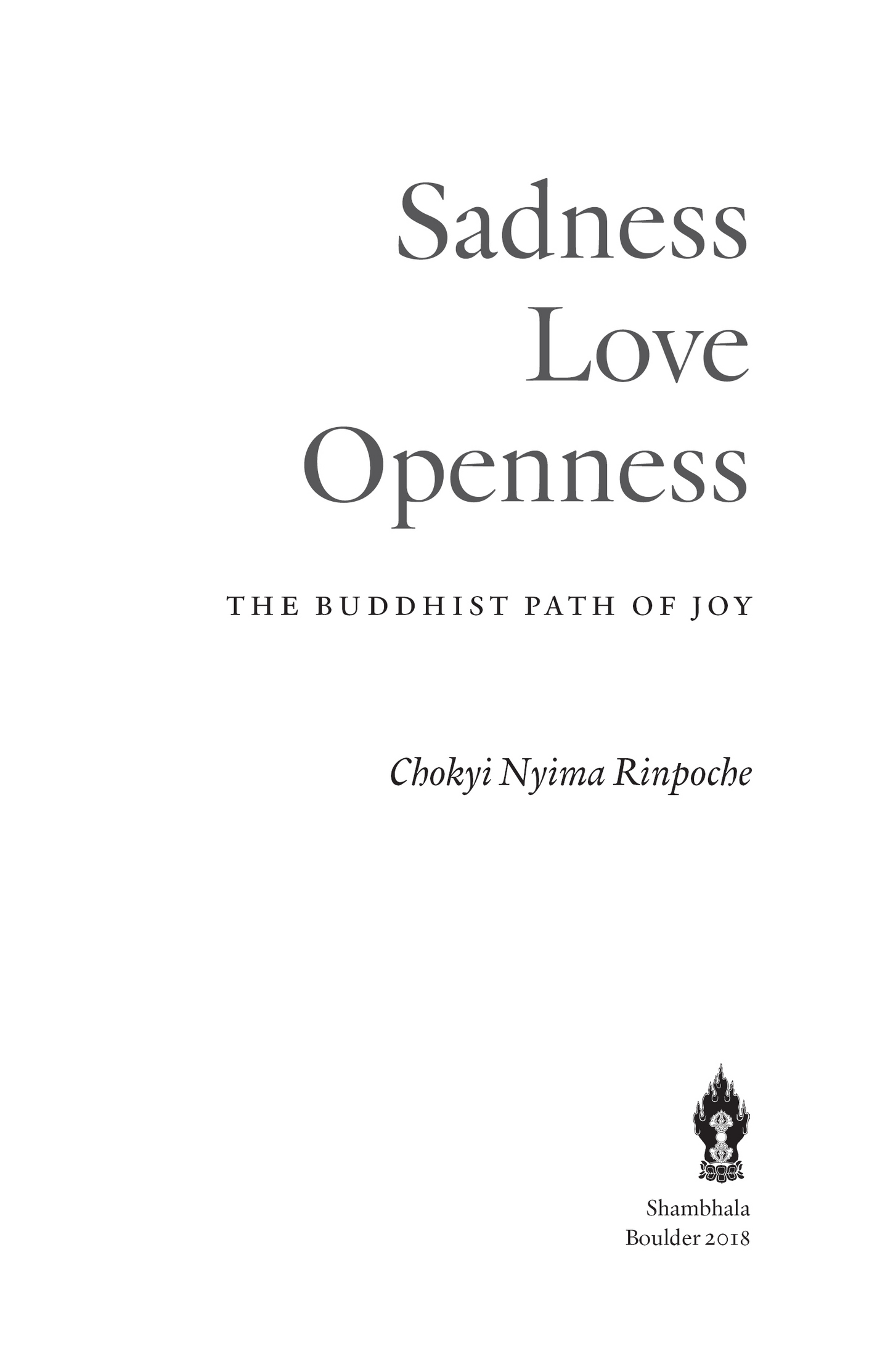Contents
Landmarks
Print Page List
Shambhala Publications, Inc.
4720 Walnut Street
Boulder, Colorado 80301
www.shambhala.com
2018 by Chokyi Nyima Rinpoche
Photo of Chokyi Nyima Rinpoche on by Chris Zvitkovits
All rights reserved. No part of this book may be reproduced in any form or by any means, electronic or mechanical, including photocopying, recording, or by any information storage and retrieval system, without permission in writing from the publisher.
Cover design by Zoe Norvell
LIBRARY OF CONGRESS CATALOGING-IN-PUBLICATION DATA
Names: Chkyi Nyima, Rinpoche, 1951 author.
Title: Sadness, love, openness: the Buddhist path of joy / Chkyi Nyima Rinpoche.
Description: First edition. | Boulder: Shambhala, 2018.
Identifiers: LCCN 2017045774 | ISBN 9781611804881 (pbk.: alk. paper)
eISBN 9780834841642
Subjects: LCSH: Religious lifeBuddhism. | Spiritual lifeBuddhism.
Classification: LCC BQ7775 .C53 2018 | DDC 294.3/444dc23
LC record available at https://lccn.loc.gov/2017045774
v5.3.1_r2
a
CONTENTS
Warm and accessible, yet profound and insightful. Chokyi Nyima Rinpoche offers compelling advice for our times. This book is a treasure of timeless wisdom that today is needed more than ever.
Cher
My friend and teacher Chokyi Nyima Rinpoche is a seasoned and authentic Dzogchen master. He has written a book that throws a lifeline to all of us struggling in the sea of ignorance, desire, and hatred. As he says, Dharma is not a hobby, but it is a very serious business indeed. Dharma can save us from the ocean of forgetfulness so that we may remember who we really are: beings of light, love, and wisdom. Complete liberation is possible if we do the work and guaranteed if we follow our teachers advice. Rinpoche takes us through the stages of Buddhist practice leading to the joy and freedom of the Great Perfection, Dzogchen. Rinpoche emphasizes the necessity of embracing the truths of impermanence and dependent origination as the sources of our future enlightenment. This is a truly inspiring book for all practitioners.
Richard Gere
Here we learn how to truly appreciate all of lifein full sadness and full happinesswith the simple recipe of being calm, kind, and aware, and full of joy in everything.
Piet Hut, professor of astrophysics and head of the program in Interdisciplinary Studies, Institute for Advanced Study, Princeton
Different traditions differ in how they understand and use the term mindfulness, yet they agree on the nondual nature of mind and the need for authentic instruction and practice. As venerable Chokyi Nyima Rinpoche describes in this elegant, succinct, and extremely useful primer on essential Dharma as a way of being, there are many different methods in the universe of meditation, but in the endand from the beginningthose that are authentic and trustworthy serve one purpose, and that is realized, embodied wakefulness.
Jon Kabat-Zinn, author of Full Catastrophe Living and Meditation Is Not What You Think
Deep sadness, because nothing lasts.
Fervent love, because all beings are my beloved family.
Lucid openness, because this ordinary mind is full awakening.
Sheer joy, because all of this is true.
INTRODUCTION
In Buddhism, gaining concrete, firsthand experience with the instructions is paramount. If we are searching for freedom and awakening, treating topics such as impermanence and suffering, love and compassion, or insight into the nature of the mind as abstract concepts is not sufficient. The only way to truly understand these crucial points is through direct experience. Only then will the Dharma be applicable and truly effective.
What are the experiences that the teachings of the Buddha are founded on? They are sadness, love, and openness. Although they appear to be quite different, sadness and openness are in fact intimately connected. The profound sadness that overwhelms us when we understand the impermanent nature of all phenomena opens us up to the world around us. We open our hearts and begin to notice our fellow beings. We see how we all must face the hardships of life; we understand the fleeting nature of our joys; and we become aware of how much worry, pain, and suffering we all go through in our lives. In this way, we realize that we all share similar painful experiences. Knowing what others go through and feel, we cannot help but sympathize with them, and the wish to help and protect our fellow beings naturally wells up in us. This wish to help and protect arises from love, and the more we open our eyes to others suffering and delusion, the stronger our love becomes. Love clears the mind of the thick fog of desire, anger, and ignorance. Love is like the sun that burns through the fog, dissolving it, until only vast openness and clarity remain. When nothing but boundless openness and lucidity remain, we come face-to-face with the basic nature of all phenomena beyond concepts.
Still, as thoughts reemerge, the fog inevitably reappears. But now we knowfrom our own experiencethat freedom and awakening are always right here, within us. This realization gives rise to an indescribable joy. We have experienced for ourselves that awakening is a genuine option, for us and for everyone elsehow wonderful! The heartfelt wish that everyone may awaken to true freedom is born in us and consumes us to the point where our attachment and delusion seem to dissolve naturally. All the while, we see the world for what it is, utterly impermanent and painful, and our sadness grows ever more profound. Yet our sadness is now accompanied by genuine love and affection and a deep sense of responsibility brought on by the certainty that if we simply stay on course, we will be able to make a true and lasting difference everywhere we go. This is how sadness, love, and openness sustain Dharma practitioners.
Sadness
SETTING OUT
We all know the importance of having the proper attitude when we begin a new project. This book is about the Dharmathe teachings of the Buddhaand when working with the Dharma, its important to be motivated by a particular wish. It is important to feel that, as we learn and train, we want the outcome to be useful and beneficial for everyonefor all beings. Therefore, at this point it would be good to think like this:
What I am about to do now is something that has the power to overcome all my negative emotions and confused thoughts. It will lead me along a path that leads from one joyful moment to another, the direct way to liberation and awakening. I want to share that joy with all beings.
Thinking like this changes us right away. It calms us down and relaxes us. It makes us open up to others, and we begin to notice the sadness and pain that everyone carries with them. Such a mind that truly cares about the well-being and happiness of others is a beautiful garden where flowers of wisdom and insight can bloom.
WHAT WE LIVE FOR
Buddhism views this life as just one among many. This current life began when we were born, and it will end when one day we die. During this life, we rely on certain things to keep us from harm and to support us. As small children, we rely on our parents for safety and comfort. As we grow up, we go to school and receive an education, trusting that this will be good for us. When at some point we feel we have learned enough, we look for a job that can pay our bills and afford us entertainment and fun. We rely on all these thingsalong with our family, friends, possessions, and social standingto give structure to our lives and make us happy. Actually, everything we do is motivated by the search for happiness

